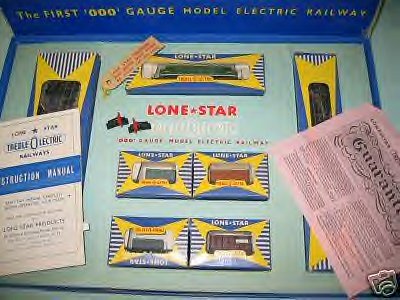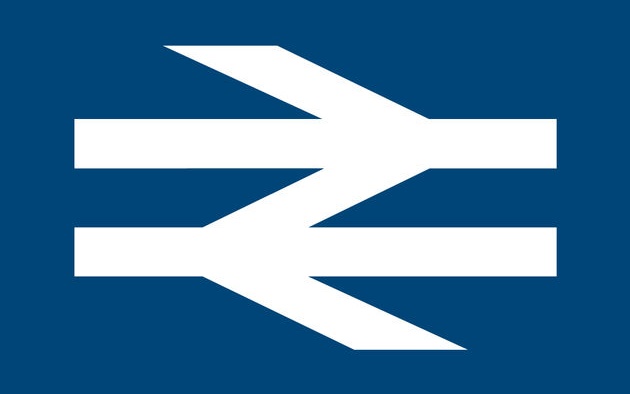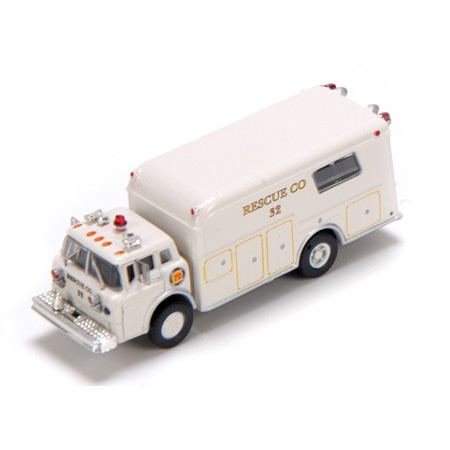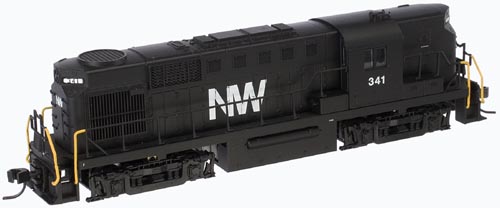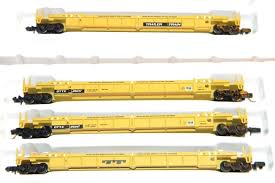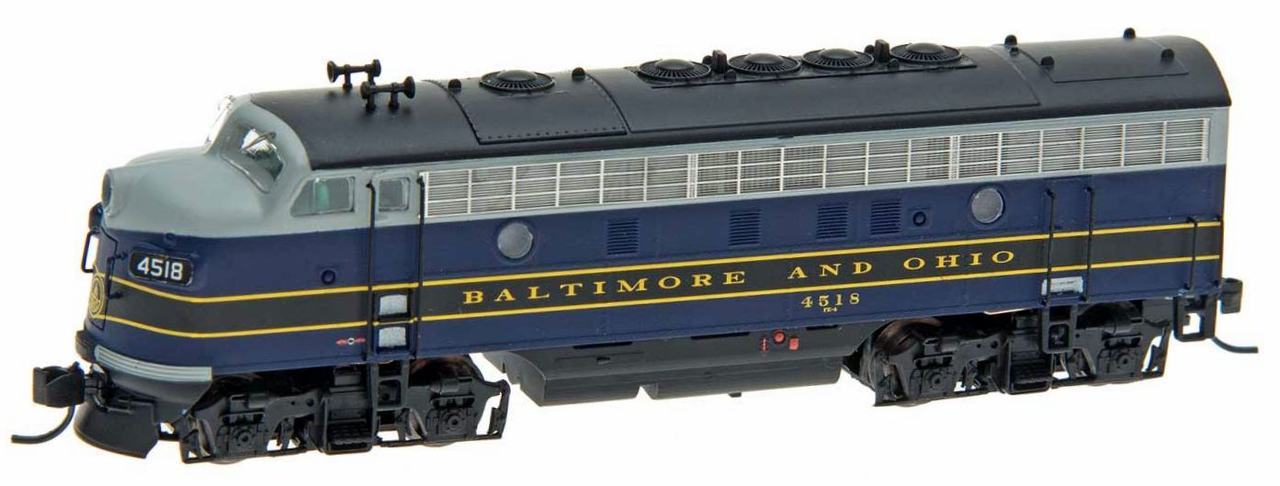Specific Item Information: contains one Diesel locomotive British Rail Class 23 "Baby Deltic" D.5900 (Lone Star EL.61) and four freight wagons.
Road Name History: British Railways (BR), which from 1965 traded as British Rail, was the state-owned company that operated most of the overground rail transport in Great Britain between 1948 and 1997. It was formed from the nationalisation of the "Big Four" British railway companies and lasted until the gradual privatisation of British Rail, in stages between 1994 and 1997. Originally a trading brand of the Railway Executive of the British Transport Commission, it became an independent statutory corporation in 1962 designated as the British Railways Board.
British Rail designed and manufactured rolling stock from 1948 to 1989, at which time its subsidiary British Rail Engineering Limited (BREL) was privatised.
1997 marked the end of the privatization effort in which the last assets of British Rail were sold to 31 regional freight and passenger operators as well as Railtrack (which was later brought under public control as Network Rail), which was given the track and infrastructure.
Read more on Wikipedia.
British Rail designed and manufactured rolling stock from 1948 to 1989, at which time its subsidiary British Rail Engineering Limited (BREL) was privatised.
1997 marked the end of the privatization effort in which the last assets of British Rail were sold to 31 regional freight and passenger operators as well as Railtrack (which was later brought under public control as Network Rail), which was given the track and infrastructure.
Read more on Wikipedia.
Brand/Importer Information: Lone Star was founded by Aubrey Robert Mills and Sidney James Ambridge in 1939 as the toy division of Die Casting Machine Tools Ltd. (DCMT) of London. DCMT was manufacturing diecasting machines and equipment. DCMT had made some toy cars for Crescent, and diecast toy cap-firing guns, which DCMT supplied under the "Lone Star" brand. "Lone Star" was a name that conjured up images of the Wild West, and while it was a reference to the Texas state flag (with its single star), the name also reminded children of the star-shaped Sheriff's badge that was often a key part of a cowboy costume.
Lone Star Locos appeared in the late 1950s as a range of fairly basic 000-scale diecast miniature trains and track, and were joined in the 1960s by the comparatively short-lived "Treble-O-Lectric" range of "proper" motorised 000-scale electric train sets. The motorised range was discontinued circa 1965. DCMT ceased its operation circa 1988.
The Lone Star Treble-O (triple O) rolling stock was scaled to 2mm to the foot (1:152) and track's gauge was 9mm.
Lone Star paved the way to the N scale model trains that would be soon after introduced by Arnold Rapido.
Read more on Irwin's Journal and on The Brighton Toy and Model Index.
Lone Star Locos appeared in the late 1950s as a range of fairly basic 000-scale diecast miniature trains and track, and were joined in the 1960s by the comparatively short-lived "Treble-O-Lectric" range of "proper" motorised 000-scale electric train sets. The motorised range was discontinued circa 1965. DCMT ceased its operation circa 1988.
The Lone Star Treble-O (triple O) rolling stock was scaled to 2mm to the foot (1:152) and track's gauge was 9mm.
Lone Star paved the way to the N scale model trains that would be soon after introduced by Arnold Rapido.
Read more on Irwin's Journal and on The Brighton Toy and Model Index.
Item created by: gdm on 2018-09-22 11:43:34. Last edited by gdm on 2020-07-24 07:29:20
If you see errors or missing data in this entry, please feel free to log in and edit it. Anyone with a Gmail account can log in instantly.
If you see errors or missing data in this entry, please feel free to log in and edit it. Anyone with a Gmail account can log in instantly.


